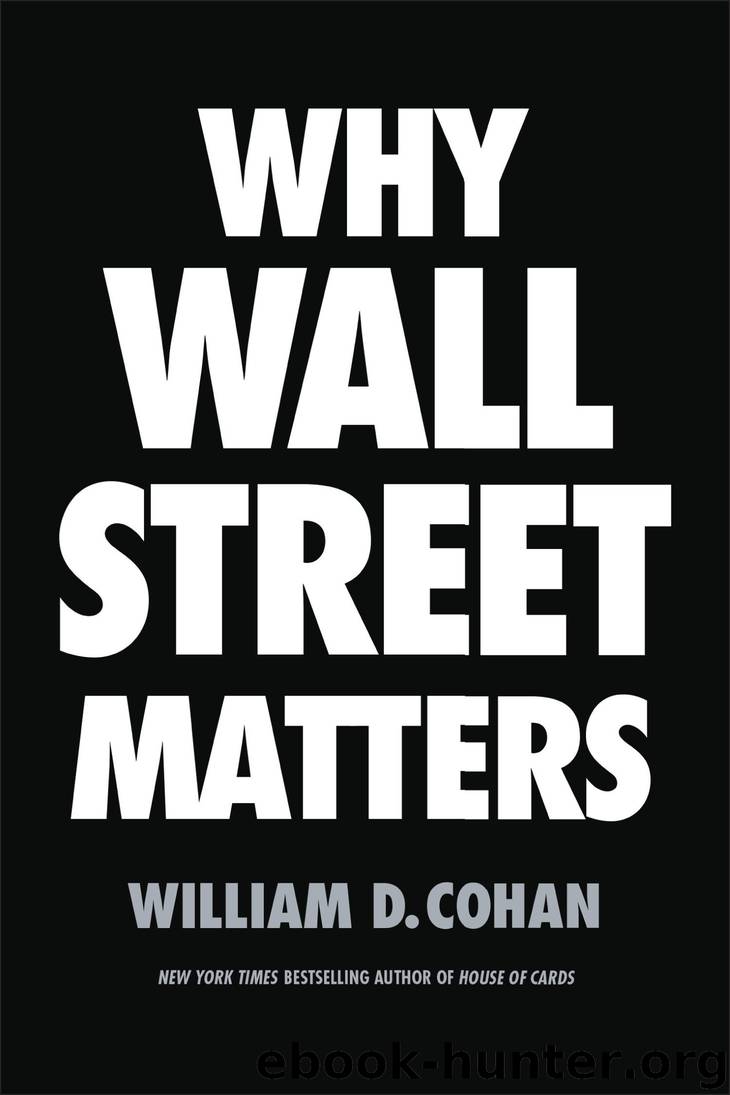Why Wall Street Matters by William D. Cohan

Author:William D. Cohan
Language: eng
Format: epub
Publisher: Random House Publishing Group
Published: 2017-02-27T16:00:00+00:00
On the afternoon of May 22, 1969, Dan Lufkin, the thirty-six-year-old cofounder of a small research-focused investment banking and brokerage firm, Donaldson, Lufkin & Jenrette, or DLJ, walked into his first board of governors meeting at the august New York Stock Exchange, then, as now, located at the corner of Broad and Wall Streets, carrying with him a copy of a document that he had filed two hours earlier with the SEC. It was the first step in the process that would transform DLJ from a ten-year-old private partnership, with its stock owned by the firm’s partners and their friends, into a public company with shares that could be bought or sold by anyone willing to do so. It also would allow DLJ to get greater access to more affordable and badly needed capital than its partners would otherwise be able to provide.
DLJ “is the first member corporation of the New York Stock Exchange to offer its equity securities to the public,” the firm proclaimed on the cover of its prospectus. DLJ’s decision to sell a portion of its equity to the public—it was hoping to raise $24 million—was a direct challenge to a nearly two-hundred-year-old NYSE rule that prohibited member firms from selling stock to the public because the NYSE had to approve all stockholders of a member firm. Obviously, with a public company’s stock being bought and sold nearly every hour of every day, the NYSE would no longer be able to approve, or not, the DLJ stockholders.
Wall Street would never be the same. And not necessarily for the better.
That was just fine with the brash and aggressive founders of DLJ, who were eager to challenge the status quo on Wall Street and everything that it meant to be a Wall Street securities firm. Ever since the three founders met at Harvard Business School and decided to start a brokerage firm together with around $500,000 in cash, they always hoped to attract permanent capital by turning to the public as investors. DLJ was a small but very profitable firm, as the document Lufkin had with him attested—revenue in 1969 was $30.4 million and pretax income was nearly $14 million, a 46 percent profit margin, facts that competitors devoured—and the three partners knew that to continue growing and to take advantage of the myriad business opportunities available to them, they needed more capital. (For instance, DLJ had just bought Louis Harris and Associates, the polling firm, for eighty thousand shares of stock.) They had always wanted to go public, and this was their chance, especially because Lufkin had grown tired of the years the NYSE spent studying the issue, without making any progress.
Lufkin knew that going public was against the NYSE rules and that DLJ could be kicked out of the NYSE club, which, of course, had the potential to damage materially its future profitability. The firm hoped that the board of governors would somehow see the situation its way and allow it to remain an NYSE member and
Download
This site does not store any files on its server. We only index and link to content provided by other sites. Please contact the content providers to delete copyright contents if any and email us, we'll remove relevant links or contents immediately.
International Integration of the Brazilian Economy by Elias C. Grivoyannis(90909)
The Radium Girls by Kate Moore(11921)
Turbulence by E. J. Noyes(7935)
Nudge - Improving Decisions about Health, Wealth, and Happiness by Thaler Sunstein(7615)
The Black Swan by Nassim Nicholas Taleb(7010)
Rich Dad Poor Dad by Robert T. Kiyosaki(6401)
Pioneering Portfolio Management by David F. Swensen(6226)
Man-made Catastrophes and Risk Information Concealment by Dmitry Chernov & Didier Sornette(5921)
Zero to One by Peter Thiel(5685)
Secrecy World by Jake Bernstein(4644)
Millionaire: The Philanderer, Gambler, and Duelist Who Invented Modern Finance by Janet Gleeson(4374)
The Age of Surveillance Capitalism by Shoshana Zuboff(4209)
Skin in the Game by Nassim Nicholas Taleb(4161)
Bullshit Jobs by David Graeber(4094)
The Money Culture by Michael Lewis(4076)
Skin in the Game: Hidden Asymmetries in Daily Life by Nassim Nicholas Taleb(3929)
The Dhandho Investor by Mohnish Pabrai(3699)
The Wisdom of Finance by Mihir Desai(3651)
Blockchain Basics by Daniel Drescher(3507)
